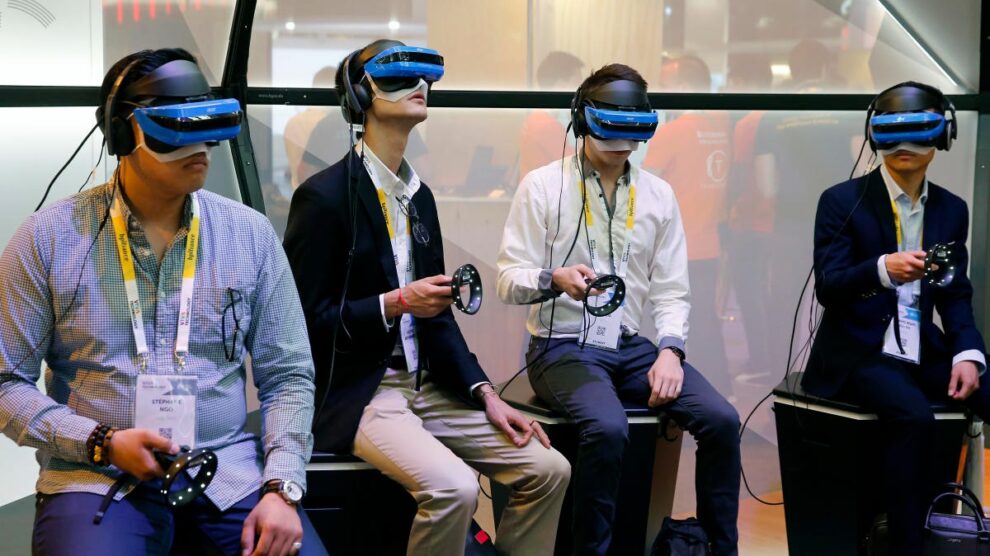A Promising Start with Hiccups
WMR’s initial appeal was undeniable. Unlike its pricier competitors, WMR headsets were budget-friendly and didn’t require external sensors, making VR setup a breeze. This accessibility factor attracted a wave of newcomers, and for a while, WMR seemed poised to democratize VR.
However, WMR’s journey wasn’t without bumps. Technical limitations like lower resolution displays and tracking inconsistencies hampered the immersive experience. Additionally, the WMR app store, while steadily growing, never quite matched the content libraries of its rivals. These hurdles hindered WMR’s widespread adoption, and the platform struggled to gain significant traction against established players like Oculus and SteamVR.
Farewell, WMR: The Curtain Falls on an Era
Despite its shortcomings, WMR did leave its mark on the VR scene. Its focus on affordability and ease of use paved the way for a new generation of VR users. Developers also experimented with WMR’s unique inside-out tracking capabilities, pushing the boundaries of VR interaction.
However, Microsoft’s decision to sunset WMR reflects the platform’s struggles to compete in an increasingly competitive market. With more powerful and versatile VR headsets flooding the market, WMR’s limitations became increasingly apparent. Ultimately, Microsoft’s strategic shift towards enterprise-focused VR solutions like Microsoft Mesh sealed WMR’s fate.
Looking Beyond WMR
While WMR’s closure might sting VR enthusiasts, it’s crucial to remember that Microsoft isn’t abandoning the VR scene altogether. The company remains heavily invested in VR, with its focus now shifting towards high-end, enterprise-oriented solutions. Microsoft Mesh, for instance, envisions a future where users collaborate and interact in shared virtual spaces, blurring the lines between the physical and digital worlds.
This shift aligns with Microsoft’s broader cloud-computing and mixed-reality ambitions. WMR’s technology and lessons learned could very well feed into these future endeavors. For VR enthusiasts, Microsoft’s continued commitment to VR, albeit in a different form, offers a glimmer of hope.
The End of an Era, but Not the End of the Story
The closure of Windows Mixed Reality marks the end of an era for VR. However, it’s important to view this not as an ending, but as a turning point. WMR’s legacy of affordability and accessibility lives on, paving the way for a more inclusive VR future. And while Microsoft’s focus might have shifted, its continued investment in VR technology ensures that the story of VR is far from over. The future of VR might be different from what we envisioned with WMR, but it’s certainly an exciting one to behold.
Evaluating Windows Mixed Reality’s Impact on the VR Industry
When assessing the legacy of Microsoft’s now-discontinued Windows Mixed Reality (WMR) platform, perspectives shift depending on audience. But WMR undeniably accelerated VR adoption despite its eventual limitations.
A Gateway for Early VR Adopters
For many first-time VR buyers, WMR headsets offered an affordable entry point compared to expensive rivals. The all-inclusive bundles with no external equipment needs provided added accessibility.
This allowed a new wave of casual VR users to join early enthusiasts in experiencing virtual worlds. WMR served as a viable mainstream gateway product to seed initial interest.
Pushing the Boundaries of Inside-Out Tracking
On the technology front, WMR headsets were pioneers in inside-out tracking techniques eliminating the need for external sensors. While reliability issues persisted, it set the stage for refining these capabilities.
Inside-out innovations opened new possibilities for VR interaction concepts and portable form factors. Oculus Quest’s success owes partial debt to WMR’s R&D efforts.
Ceding the Consumer Market
Yet over time the very affordability and accessibility that attracted cost-conscious users also constrained WMR’s competitiveness at the higher end. Inexpensive designs faced natural performance ceilings.
As more feature-rich headsets entered the market, Microsoft strategically ceded consumer ambitions to focus enterprise. For early supporters, this transition away from broad VR remains bittersweet.










Add Comment